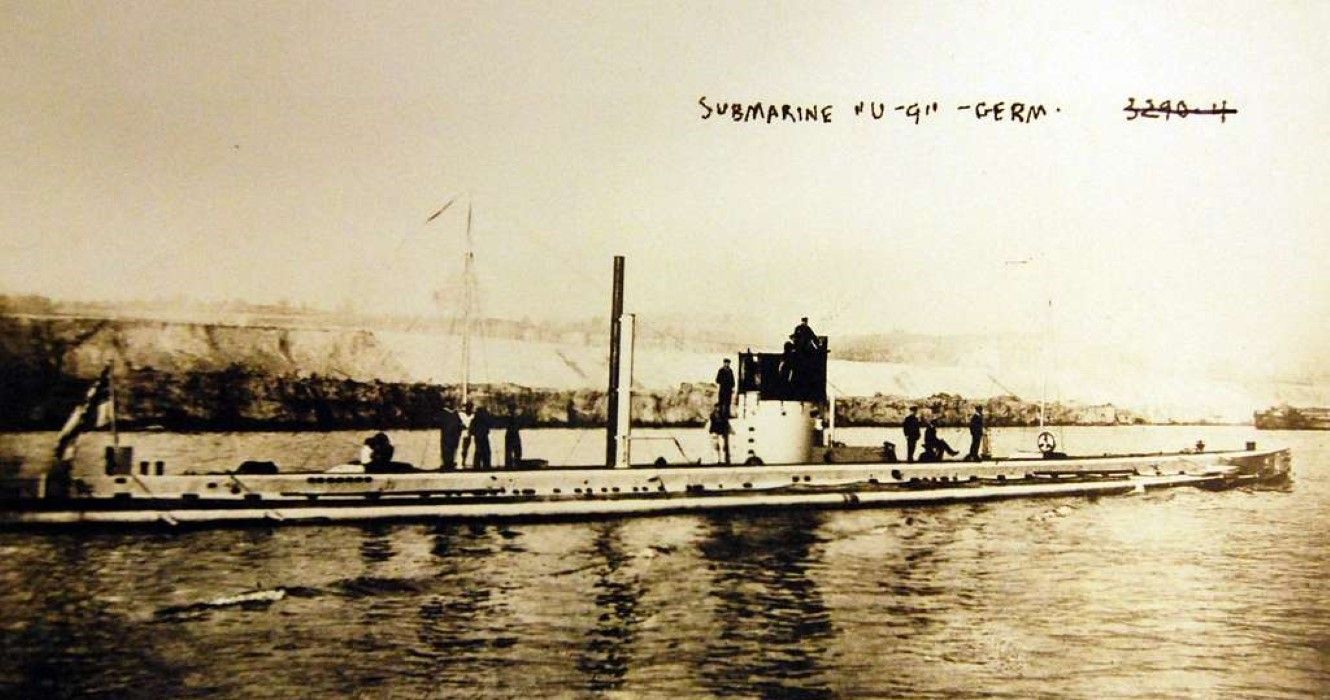A team of divers recently made the discovery of a lifetime: the last of Germany's WWI submarines to be found in U.S. waters! Led by Erik Petkovic, the expedition located the wreck just about 40 miles off of Virginia's coastline.
The submarine, named the SM U-111, was commissioned by the Imperial German Navy in 1917 to aid in its war effort. The craft served its purpose so well that when the country had to surrender, it and the rest of its seaworthy fleet were seized and destroyed by the Allied Powers.
Despite a turbulent history that almost saw its end multiple times, the U-111 proved herself to be an enduring vessel. She now lies some 400 feet beneath the ocean's surface, but with the efforts of Petkovic and his team, the U-111 may yet again find her story coming up for air.
The World's First Submarines
The history of submarines goes back much further than most people realize. The first documented underwater vessel was created by the Dutch inventor Cornelius van Drebel in the early 17th century.
However, the widespread use of submarine warfare didn't occur until World War I. Germany became a pioneer in this industry and employed an armada of U-boats (an abbreviation of the word "Unterseeboot," literally meaning "undersea boat").
The U-111 was part of Germany's fleet until 1918, sinking 3 merchant ships in the North Atlantic. Stretching 235 feet long, it featured some of the most advanced technology of its time. It was outfitted with diesel engines, periscopes, and gyroscopes so sophisticated that after Germany's surrender, it was demanded by the Allied countries along with the rest of its U-boats. These were dismantled and reverse-engineered by the United Kingdom and the United States.
President Woodward Wilson saw the U-boats as a potential spectacle to sell Victory Bonds and boost America's economy. He commanded that 6 sail around the East Coast to attract crowds. However, this plan was hampered by sabotage from the U-boat's former sailors. One of the submarines that was originally ordered was so badly damaged that it had to be replaced by the U-111.
The Treacherous Journey To America
Despite its impressive appearance, the U-111 soon revealed her own dangers. She was still being repaired when Lieutenant Commander Freeland Daubin and his 32-man crew boarded her. Less than half of the U.S. sailors had ever been in a submarine before, immediately endangering their mission. To make matters worse, her equipment and instructions were all labeled in German, a language no one on board understood.
The rest of the ordered U-boats were able to set sail for the United States on the 3rd of April 1919, leaving the U-111 to continue its mending. When it was finally able to depart on the 7th, Daubin made the bold decision to take a faster but riskier path across the Atlantic. The Northern Route took the submarine through the same foggy, glacier-studded waters that had previously caused the fatal wreck of the R.M.S. Titanic.
The U-111 almost met her own end along the frigid voyage. Four days into the journey, it was discovered that German saboteurs had left a plug in its hull, which gradually disintegrated and nearly sunk the vessel. While the crew were able to hastily save the sub, they were soon endangered again by low food and fuel supplies, as well as hypothermia inside the unheated U-boat.
Incredibly, the U-111 emerged in the New York harbor just 12 days after it had set sail from England. It beat the rest of its fleet by 2 days and was immediately met by gawking onlookers.
Finding The Wreck
After its stint as a war bond attraction, the U-111 was hauled out to sea to be used as target practice for the U.S. Air Force. It sank twice before being dragged away to a safer location and filled with explosives. On August 31st, 1922, the charges were detonated, and it was assumed that the submarine sank to a depth of 1,600 feet.
It was believed that the U-boat's remains would stay undisturbed forever, thanks to the extreme conditions of such a low location. However, Erik Petkovic remained unconvinced. The skilled diver was suspicious since other U-boat wrecks had been found in shallower waters, and the area had many reports of snagged fishing nets. He carefully combed through the Navy's records to determine which boat had been used to tow the submarine to its final location. Upon discovering it, he was able to narrow down the coordinates and establish a team to dive to the spot.
In the summer of 2021, Petkovic partnered with Rusty Cassway and other divers to comb the sea floor. An undersea robot was used to photograph the site and miraculously caught sight of the U-boat's conning tower and guns. Upon matching the raised platform to archival footage of the U-111's design, the crew knew they had something truly remarkable on their hands. It had the potential to rival other recent discoveries and famous wreck sites around the globe.
Unfortunately, it isn't a wreck that can be easily accessed. A dive was too dangerous to undertake at the time of the find, but the highly-experienced team is already setting plans into motion. The U-boat's location is actually 400 feet below the water's surface. So, while a dive is possible, it is still highly dangerous and requires a great deal of planning. Nevertheless, Petkovic is set on exploring the wreck in the coming months and revealing more of its incredible story.


.jpg)
